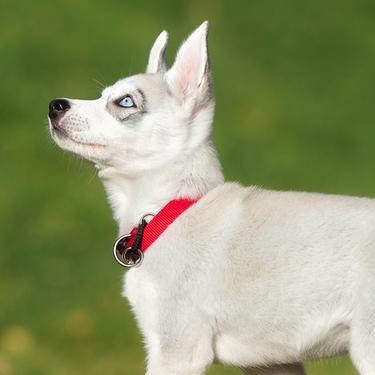
-
Find the right food for your petTake this quiz to see which food may be the best for your furry friend.Find the right food for your petTake this quiz to see which food may be the best for your furry friend.Featured products
 Adult Chicken & Barley Recipe Dog Food
Adult Chicken & Barley Recipe Dog FoodSupports lean muscle and beautiful coat for adult dogs
Shop Now Hill's Science Diet Adult Chicken & Beef Entrée Dog Food
Hill's Science Diet Adult Chicken & Beef Entrée Dog FoodChicken & Beef Entrée in a delicious loaf with complete & balanced nutrition to help keep adult dogs active and healthy
Shop Now Adult Large Breed Chicken & Barley Recipe Dog Food
Adult Large Breed Chicken & Barley Recipe Dog FoodSupports healthy joints, lean muscle, and beautiful coat for large breed dogs
Shop NowFeatured products Adult Tender No Corn, Wheat, Soy Chicken & Vegetables Stew Cat FoodShop Now
Adult Tender No Corn, Wheat, Soy Chicken & Vegetables Stew Cat FoodShop Now Senior Vitality Adult 7+ Tuna & Vegetables Stew
Senior Vitality Adult 7+ Tuna & Vegetables StewImproves Everyday Ability to Get Up & Go
Shop Now Adult Turkey & Liver Entrée Cat Food
Adult Turkey & Liver Entrée Cat FoodPrecisely balanced nutrition with the delicious taste of minced turkey & liver to help fuel the energy needs of cats during the prime of their life
Shop Now -
Dog
- Dog Tips & Articles
-
Health Category
- Weight
- Food & Environmental Sensitivities
- Urinary
- Digestive
- Joint
- Kidney
-
Life Stage
- Puppy Nutrition
- Adult Nutrition
- Senior Nutrition
Cat- Cat Tips & Articles
-
Health Category
- Weight
- Skin & Food Sensitivities
- Urinary
- Digestive
- Kidney
-
Life Stage
- Kitten Nutrition
- Adult Nutrition
Featured articles How to Properly Mix Wet & Dry Pet Foods
How to Properly Mix Wet & Dry Pet FoodsAn Orange cat eating from a bowl filled with mixed food
Read More What Is Littermate Syndrome? Pet Adoption Guide
What Is Littermate Syndrome? Pet Adoption GuideLearn more about littermate syndrome in dogs and cats and how to successfully navigate adoption and early socialization processes.
Read More The Science Behind Our Love for Pets
The Science Behind Our Love for PetsLearn the scientific reasons why we have such strong connections with our pets, and what science says about the love between humans and our furry friends.
Read More -


It's not uncommon to see crystals in cat or dog urine. In fact, crystals are so common as to be considered normal in some pets. When the crystals become overly abundant or when abnormal types of crystals present themselves, however, they may cause problems or indicate the presence of disease.
Crystals are typically most problematic for the urinary system, but the underlying issues leading to urine crystal formation often originate in other parts of the body.

How Urinary Crystals Form
If you can remember back to your high school chemistry class, you'll recall that crystals will form in solutions when there's an overabundance of certain molecules — think of salt crusting a bucket of ocean water after the water has evaporated. Crystal formation also depends on the temperature, the concentration of certain compounds and the acidity of the urine.
Pet parents often confuse urinary crystals with urinary stones, or uroliths. Urinary stones are similar to human kidney stones, which is less common in dogs and cats but typically form in the bladder. Urine crystals and stones aren't always related. Certain kinds of crystals in cat urine or dog urine may eventually lead to stone formation.
The cause of crystals in cats and dogs depend on the kind of crystal your veterinarian finds. In general, crystals are found when an abundance of certain compounds are excreted by the kidneys. These molecules can be overabundant in the case of liver diseases, poisoning and genetic conditions, among other causes.
Crystals in Cat Urine vs. Crystals in Dog Urine
Dogs and cats are different in many ways, but both seem predisposed to urine crystal formation. The crystals themselves are nearly identical. The difference lies in the kind of crystals that form in dogs or cats and how they can adversely affect these pets.
Wag! notes that while the presence of crystals in dog urine may indicate an underlying disease, the crystals themselves don't usually hurt a dog. In cats, the small size of the urethra means that crystals can clump and block the flow of urine.
The Cornell Feline Health Center notes that crystals in cat urine are sometimes associated with a range of urinary diseases collectively called feline lower urinary track disease (FLUTD). The signs of FLUTD may include:
- Bloody urine
- Straining to urinate
- Crying or vocalizing while using the litter box
- Urinating less than normal
- Urinating outside the litter box
If you notice any of these signs you should take your cat to the vet immediately. Your vet will check for and identify any crystals in your cat's urine and evaluate her for any associated diseases. Every time a pet's urine is thoroughly examined, a microscopic search for crystals is part of the equation. Your vet may also suggest blood testing and X-rays.
Common Types of Urinary Crystals
Crystals in cat and dog urine are often one of several common types:
- Ammonium urate: Most commonly found in dog urine, an abundance of these crystals may signal liver disease, according to Vet Times. Certain breeds like English bulldogs and Dalmatians are predisposed to these crystals. While rare in cats, some can be predisposed to this condition due to genetic issues or defects.
- Struvite (magnesium ammonium phosphate): Low numbers of struvite crystals are considered normal for some dogs and cats. They occur most commonly in alkaline urine or urine that's not fresh. They can also be associated with infection, which is one of the things your vet will test for if they find crystals in your pet's urine. Struvite crystals in cats can form plugs that lodge in the urethra and lead to urinary obstruction. They can lead to urinary stones in both dogs and cats.
- Bilirubin: Lighthouse Veterinary Consultants notes that bilirubin crystals indicate possible liver problems in cats. They can be present in otherwise healthy dogs if the urine is concentrated, especially in males.
- Calcium oxalate: Pets excreting too much calcium or oxalic acid in their urine can form these crystals. These can also be found in normal urine, particularly if it's acidic or refrigerated. These crystals can also indicate infection if the pH in the urine is low and can be associated with calcium oxalate stones. Although rare, they can form urethral plugs in male cats. International Cat Care notes that toxic loads of calcium oxalate are a sign of poisoning from antifreeze, which cats can accidentally lick off a floor or open bottle. There is still a lot to learn about these types of uroliths as they associated with a complex and incompletely understood sequence of events.
- Cystine: Uncommon in both dogs and cats, these crystals can be seen in dogs with an inherited tendency to excrete the amino acid cystine. Dogs who form these crystals also have a possibility of forming stones, according to the Minnesota Urolith Center.


Tasty Tips
Young pets may need several visits in their first year for vaccinations. Adult pets generally benefit from annual check-ups, while senior or special-needs pets might require more frequent visits.
Treating Pet Urinary Stones and Crystals
Once a vet identifies urinary crystals in dog urine or cat urine, the next step is to assess whether the crystals are likely to cause a problem. In some cases it is more important to treat a pet's underlying condition first. For crystals that may lead to stone formation or urinary obstruction, dissolving or eliminating them is a higher priority. Nutritional adjustments and convincing your pet to drink more water will often treat crystals effectively, but surgery is also an option in severe cases.
While it's rare for crystals to form as the result of poor nutrition or inadequate diet selection, nutritional imbalances can play a role. Nutrition is crucial when it comes to reducing crystals in cases where stone or urethral plug formation is a risk. Your vet will likely prescribe a therapeutic food to a cat or dog at risk for a urinary obstruction.
Make sure your pet always has access to plenty of fresh water. Keeping pets hydrated keeps their urine from becoming concentrated and makes crystals less likely to form. Offering additional sources of water along with wet food is strongly recommended.
As always, follow your vet's advice on feeding and home care. Being vigilant about nutrition and water intake goes a long way toward reducing or even preventing crystal formation.


Dr. Patty Khuly is an award-winning veterinarian known for her independent thinking, her spirited pet advocacy, her passion for the veterinary profession, and her famously irreverent pet health writing.
Dr. K is an honors graduate of both Wellesley College and the University of Pennsylvania School of Veterinary Medicine. She received her MBA at The Wharton School of Business as part of the prestigious VMD/MBA dual-degree program. She now owns Sunset Animal Clinic, a veterinary practice in Miami, Florida.
Related products

Supports healthy joints, lean muscle, and beautiful coat for large breed dogs

Supports lean muscle and beautiful coat for adult dogs

Chicken & Beef Entrée in a delicious loaf with complete & balanced nutrition to help keep adult dogs active and healthy

Chicken & Barley Entrée in a delicious loaf with great taste and precisely balanced nutrition to support 5 essential building blocks for lifelong health
Related articles

Learn the scientific reasons why we have such strong connections with our pets, and what science says about the love between humans and our furry friends.

Learn more about littermate syndrome in dogs and cats and how to successfully navigate adoption and early socialization processes.

Understanding how to train puppies and kittens starts with understanding their differences. Discover tips for training success for puppies vs. kittens.

An Orange cat eating from a bowl filled with mixed food

Put your pet on a diet without them knowing
Our low calorie formula helps you control your pet's weight. It's packed with high-quality protein for building lean muscles, and made with purposeful ingredients for a flavorful, nutritious meal. Clinically proven antioxidants, Vitamin C+E, help promote a healthy immune system.
Put your pet on a diet without them knowing
Our low calorie formula helps you control your pet's weight. It's packed with high-quality protein for building lean muscles, and made with purposeful ingredients for a flavorful, nutritious meal. Clinically proven antioxidants, Vitamin C+E, help promote a healthy immune system.

